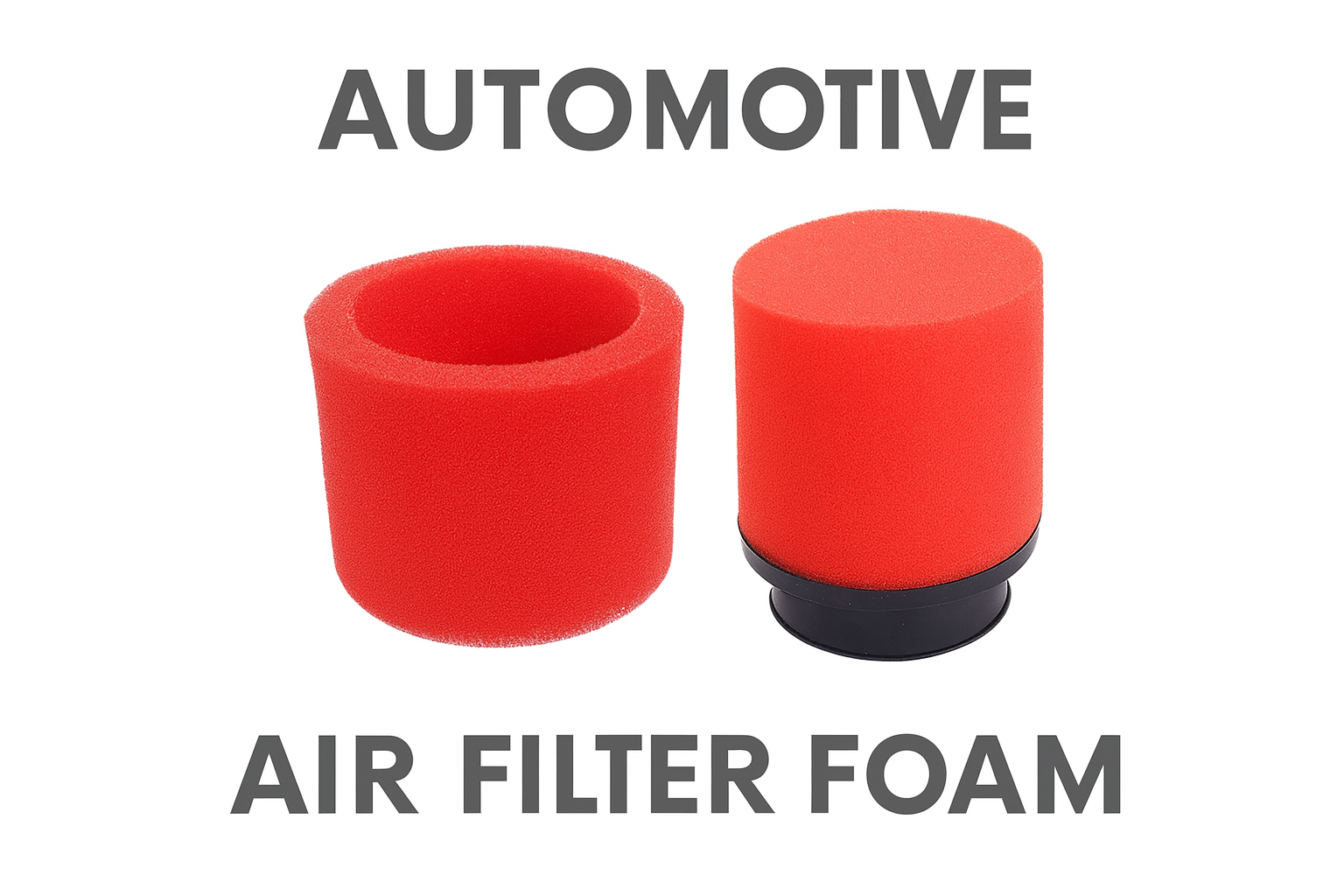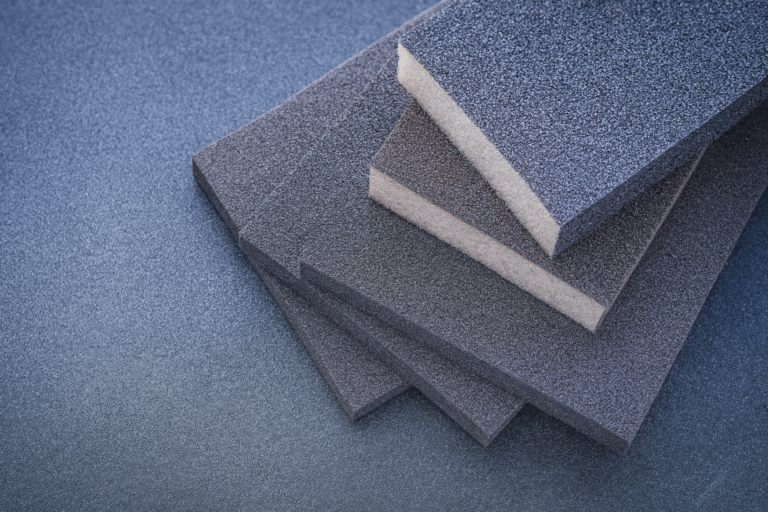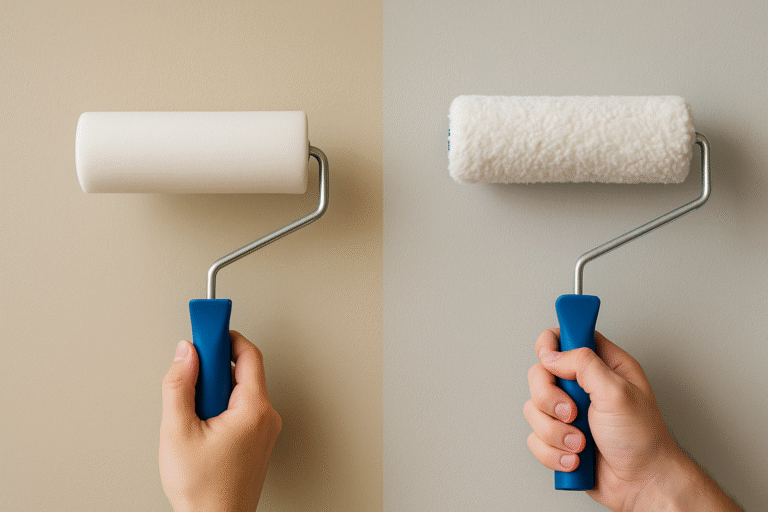Foams are everywhere – inside cushions, mattresses, soundproof panels, and even air filters. But not all foams are the same. This blog explains the key differences between polyurethane, polyether, and polyester foams to help you understand their best uses.
Ever wondered why one type of foam feels soft and flexible while another stays firm and resilient? The secret lies in its chemistry. Foams aren’t created equal, and their differences play a big role in where and how they’re used. Polyurethane, polyether, and polyester foams are the most produced materials, and each has unique properties that dictate their applications. We use foams in various applications ranging from cushioning, packaging, air filter foams, filter foams sheets, just to name a few. Choosing the right foam can provide added durability, performance, and cost savings.
In this blog, we’ll simplify the differences between these three foams, highlight their strengths and limitations, and help you understand which works best for filtration and other industrial uses.
What is Polyurethane Foam?
Polyurethane foam stands out as one of the most versatile and widely used foam materials globally. It is created by reacting polyols with isocyanates, producing a lightweight yet durable foam structure. Its flexibility in design makes it suitable for a wide range of applications, from furniture cushioning and automotive seating to insulation and industrial uses.
One of the main advantages of polyurethane foam is that it can be designed with a variety of densities and firmness levels, making it useful for soft comfort applications as well as more rigid structural applications. In the filtration industry, polyurethane filter foam is extensively used because of its open-cell structure, which allows air and liquids to flow through while trapping unwanted particles. This is why it is often found in air filter foams, water filters, and other applications that require purification.
The combination of durability, cost, and versatility guarantees that polyurethane filter foam will continue to be the preferred material for a number of industries.
Polyether Foam – Properties & Uses
Polyether foam is a polyethylene foam, which is part of the polyurethane family of foams. Polyether foams maintain exceptional resilience and durability even in damp conditions. They have a good water-resistance, antibacterial resistance, and low-temperature impact resistance compared to polyester foams. This makes polyether foams highly reliable in applications and environments in which water or humidity is present.
Polyether foam is commonly used in aquarium filter foam and water treatment systems. Its open-cell structure can provide water flow and keep impurities from escaping, ensuring clean and healthy aquatic environments. Other than filtration, polyether foam is recognized for its flexibility, cushioning ability, and hydrolysis resistance in the medical, packaging, and automotive industries.
If you want a deeper guide on selecting the right foam for water filtration, check out our blog on choosing the best filter foam for water filtration.
Polyether foam is also lightweight and easy to process, making it a practical choice for manufacturers who need custom foam solutions. With its balance of durability and affordability, it continues to be a preferred material where water resistance and long-term performance are essential.
Polyester Foam – Properties & Uses
Polyester foam is another important category of polyurethane foam, offering a distinct set of properties that make it suitable for demanding applications. Unlike polyether foam, polyester foam demonstrates excellent oil resistance, abrasion resistance, corrosion resistance, and high-temperature tolerance. It is also highly stretchable, with elongation often exceeding 150%, which adds to its versatility.
This foam is characterized by its uniform cell structure, smooth surface, and good adhesion to fabrics, which makes it ideal for high-end composites and laminates. Because of these qualities, polyester foam is widely used in luxury automotive interiors, premium fabric composites, filtration media, cosmetics packaging, and printer consumables. It also finds applications in flocking and decorative finishes due to its durability and ability to maintain its form under stress.
While it lacks the same water resistance as polyether foam, polyester foam excels in strength, resilience, and performance under mechanical and chemical stress. For industries where appearance, durability, and high-quality finishing matter, polyester foam is often the material of choice.
Key Differences Between Polyether and Polyester Foam
Although both are subtypes of polyurethane foam, polyether and polyester foams differ significantly in properties and applications. Below is a quick comparison:
| Feature / Property | Polyether Foam | Polyester Foam |
| Water Resistance | Excellent – highly resistant to moisture | Moderate – less suitable for wet conditions |
| Temperature Resistance | Performs well in low temperatures | Superior high-temperature resistance |
| Chemical Resistance | Good resistance to bacteria and mild chemicals | Excellent oil, abrasion, and corrosion resistance |
| Strength & Stretchability | Flexible but moderate strength | High tensile strength, elongation >150% |
| Appearance & Finish | Coarser cell structure, softer feel | Uniform cell structure, glossy finish |
| Common Uses | Aquariums, filtration in wet environments, water treatment | Automotive interiors, fabric laminates, cosmetics, printer consumables |
Summary:
- Polyether foam is preferred in wet or humid environments because of its superior water resistance, durability at low temperatures, and antibacterial properties.
- Polyester foam, on the other hand, is chosen for strength, resilience, and premium finishes, especially in high-end automotive, fabric composites, and cosmetic packaging.
Both materials share the core benefits of polyurethane foam but are optimized for very different environments and performance requirements.
Choosing the Ideal Foam for Your Application
Knowing the differences between polyurethane, polyether, and polyester foam is important when selecting foam material. Polyurethane filter foam offers a high degree of versatility, while polyether filter foam holds up well in wet environments, and polyester filter foam provides strength and resistance for demanding applications. Each foam is used in different industries, including air filtration, automotive, and consumer products.
At the end of the day, choosing the right foam depends on your application requirements; whether it’s flexibility, resilience, or resistance to moisture and chemicals. A clear understanding of these differences ensures better performance, longer lifespan, and value for your investment.
Kare Foam, being a polyurethane foam supplier, we manufacture premium filter foam sheets for diverse needs. With expertise in polyurethane, polyether, and polyester filter foams, we deliver durable and efficient solutions. Kare Foam guarantees quality, performance, and value in all its products, whether it’s air filter foam or custom foam solutions, making us a reliable partner for long-term use.



